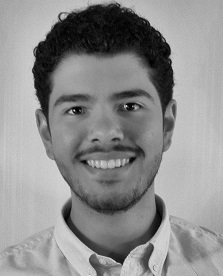“Engineering N- and H-related defects towards resistive ZnO Nanowires”
José VILLAFUERTE
Ph.D. student,
LMGP, Institut Néel
Abstract
Controlling the physical properties of ZnO nanowires grown by chemical bath deposition (CBD) is a crucial issue for their use as building blocks in piezoelectric nanogenerators and pressure sensor devices. However, their formation occurs in a growth medium containing a large number of impurities including carbon, nitrogen, and hydrogen. Here, we reveal, in addition to the typical interstitial hydrogen in bond-centered sites (HBC) and zinc vacancy – hydrogen (VZn-nH) complexes, that the nitrogen-related defects play a significant role on the physical properties of unintentionally-doped ZnO nanowires. In particular, we show by density-functional theory that the (VZn-NO-H) defect complex acts as a deep acceptor with a relatively low formation energy and exhibits a prominent Raman line at 3078 cm-1 along with a red-orange emission energy of around 1.82 eV in cathodoluminescence spectroscopy. The nature and concentration of the nitrogen- and hydrogen-related defects are found to be tunable using thermal annealing under oxygen atmosphere, but a rather complex, fine evolution including successive formation and dissociation processes is highlighted as a function of annealing temperature. ZnO nanowires annealed at the moderate temperature of 300 °C specifically exhibit one of the smallest free charge carrier density of around 5.6 x 1017 cm-3 along with a high mobility of about 60 cm2/V s following the analysis of longitudinal optical phonon – plasmon coupling. These findings report a comprehensive diagram showing the complex interplay of each nitrogen- and hydrogen-related defect during thermal annealing and its dependence on the annealing temperature. They further reveal that the engineering of the nitrogen- and hydrogen-related defects as the major source of crystal defects in ZnO nanowires grown by CBD is capital to precisely monitor their electronic structure properties governing their electrical and optical properties in any devices.
3 parvis Louis Néel - 38000 Grenoble
Accès : TRAM B arrêt Cité internationale
7ème étage - Bâtiment Z



